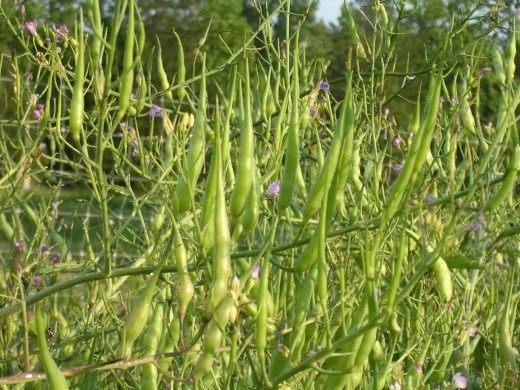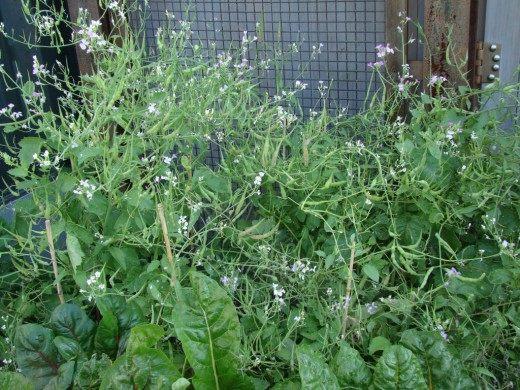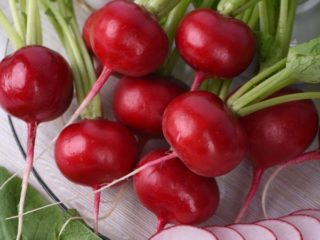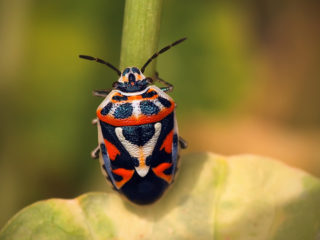Content
Javan radish is a new type of beloved spring vegetable, the main difference of which is the absence of a root crop. The pod radish has its own characteristics, advantages and disadvantages, so it is important for every summer resident to find out as much information as possible about this new product in vegetable growing.
What are the benefits of pod radish
Javanese pod radish is no less useful vegetable than the usual varieties. It contains many minerals and vitamins that are required by the human body. In addition, it has the following beneficial properties:
- improves bowel function;
- suppresses pathogenic microflora;
- strengthens the walls of blood vessels;
- has a beneficial effect on the condition of the joints;
- improves immunity.
Description of javanese radish
Pod radish is a very exotic crop that grows on the island of Java. The adult plant is completely covered with serpentine pods, for which the culture is grown.
In its homeland (tropical climate), Javanese pod radish can grow to the size of a small tree with pods like snake tails hanging from the branches. Their length varies within 60 cm, although sometimes it can reach a whole meter. Due to the appearance of the pods, the vegetable received several associative names at once - serpentine radish, tree radish, tailed radish and rat's tail.
In the local climate, the pods grow more modest - only 12 - 15 cm. They taste like an ordinary red radish, but the main difference is the presence of a spicy aftertaste, unlike any other vegetable.
Main characteristics
This vegetable species has several varieties that differ in the color and size of the pods. There are long and short green and purple (pointed) pods that can grow straight or wriggle in the shape of a snake. More than 40 pods grow on each bush.
Javanese radish can be seeded or planted outdoors. The timing and rules of planting practically do not differ from the planting of conventional varieties. It can tolerate small frosts, but it is extremely susceptible to various pests.
Yield
The first fruits of the exotic leguminous vegetable can be seen already in the middle of summer. They are not yet very similar in taste to ordinary radishes, they have more neutral notes. Ripening, the pods thicken, become thicker and crisp. A characteristic taste of pungency also appears in them. The fruits are actively used in the preparation of salads, as an additional ingredient for okroshka, for individual marinades and preservation, frying and simply eating raw. A pod with a diameter of 10 mm at the base is considered ideal.
In addition to the pod component of the plant, you can also eat radish flowers.
The pods are best harvested from the middle and bottom of the bushes, and the tops are pinned. In this case, the branches that have already borne fruit will begin to give lateral shoots, on which fruits will also grow. If you find drying out stems, you must cut off all the pods.
Each bush grows at least 40 pods, and the crop can be harvested from mid-summer until autumn. The main condition for a good harvest is fertile soil and free space for growth, because whole shrubs grow from a small seed, branching in different directions.
Advantages and disadvantages
Javanese pod radish is a vegetable crop that is not yet familiar to all gardeners. It has its own advantages and disadvantages, like any other plant.
The advantages of the pod variety include the following:
- good productivity;
- high germination;
- versatility of application;
- unpretentious cultivation;
- taste qualities.
Of the shortcomings, it can only be noted that the Javanese radish is susceptible to various diseases and attack by pests, and also the fact that it is not possible to buy the seeds of this vegetable in every store.
Planting and care rules
In order for the serpentine radish to give a good harvest, it is necessary to properly prepare for its planting. There are no fundamental differences with planting ordinary varieties, so even a novice gardener can cope with such a process.
Recommended timing
Because radish is an early vegetable that can be planted as soon as the snow grows. If you plant the Javanese radish under the film, then the optimal sowing time is March-April. When planting through seedlings into open ground, planting is carried out in mid-to-late April.
Site selection and preparation of beds
The leguminous representative of this vegetable culture loves light. Therefore, the site for its disembarkation must be in an open area. Winds and draft are not terrible for a vegetable, but an increased amount of moisture can cause many diseases. Therefore, the place for the radish must be chosen taking into account its needs.
Like all vegetables, radishes are responsive to fertile light soil. Good soil is the key to a rich harvest. Therefore, before planting Java radish, it is necessary to fertilize the soil with mineral components and organic matter. It is best to feed before winter by sprinkling a 5-cm layer of fresh manure on the selected area.
Landing algorithm
You can grow radishes both by seeds and seedlings.
First option:
- In the 20th of March, sow radish seeds in prepared containers.
- Moisturize.
- Cover with foil.
- After 5 days, the first shoots should appear, then the film can be removed.
- Watering the seedlings is carried out as the soil dries out.
- In early or mid-April (you need to rely on climatic conditions and the landing site - open ground or a greenhouse), you can plant seedlings.
- You need to plant bushes at a distance of about 15 - 20 cm from each other.
Second option:
- A day before sowing, soak the seeds of the Javanese legume vegetable in warm water on cheesecloth.
- Sow seeds into the prepared grooves, trying to observe the prescribed interval (you can use adhesive tape).
- Pour a thin layer of earth on top.
- Tamp lightly.
- Drizzle.
If sowing is carried out in early spring, then the bed is covered with a film. When the threat of frost has passed, the shelter can be skipped.
Growing pod radish
After sowing, some care is required for radishes, which is no different from caring for the usual varieties of this culture.
- When the first sprouts of Javanese radish appear (after 5 to 10 days), the plant needs to be watered.
- It is immediately necessary to prepare a support on which the grown bushes will be tied up in the future. This can be done using ordinary wooden pegs.
- After 20 days, you can add urea diluted in water (1 glass of urea per 10 liters).
- If weeds appear, they must be removed manually. Using a hoe can damage a fragile root system.
- Watering the Javanese vegetable pod should be carried out as the earth dries up.If it rains periodically, then the plant does not need additional moisture.
- The bush should form 50-60 days after the first shoots appear. At this point, the plant begins to flower. For the best formation of ovaries, it is necessary to fertilize the soil with any organic means.
- During the formation of the fruit, do not pour the radish so that the pods do not gain excess moisture.
- When the branches begin to dry, all the pods are cut off. They can be dried to produce their own seed.
Pests and diseases
Pod radish, which in the photo looks like a powerful tree, is susceptible to a number of diseases and pest attacks. The most dangerous for the Javanese legume vegetable are:
- A midge that makes holes in the leaves. It is dangerous for young shoots; after flowering, it does not pose a danger to the plant.
- Aphid. It is often the culprit in the death of cabbage and radish.
- Horsefly.
- Medvedka.
- Rot and other diseases typical for ordinary radish.
You can get rid of the problems that have arisen with both specialized means and folk methods. The most effective of these is treating the Javanese legume with fresh wood ash. You can simply sprinkle the bush or add ash with water and carefully spill the soil.
Cooking applications
The Javanese radish is a versatile fruit. It can be used in the following ways:
- Roasting. The small pods fried in oil are like crispy juicy peppers with a uniquely spicy flavor.
- Fresh application. Pod radish can be added to many salads, cut to add to okroshka.
- Salting and pickling. Salting the pods will help preserve the vitamin vegetable for the whole winter.
- As a side dish for meat dishes.
Conclusion
Javanese radish is an exotic vegetable that is only gaining popularity in the country. Many gardeners are wary of a thermophilic plant, so they are afraid to plant it in local climatic conditions. But the reviews of those who have already tried to grow pod radish indicate that the culture is very unpretentious.











